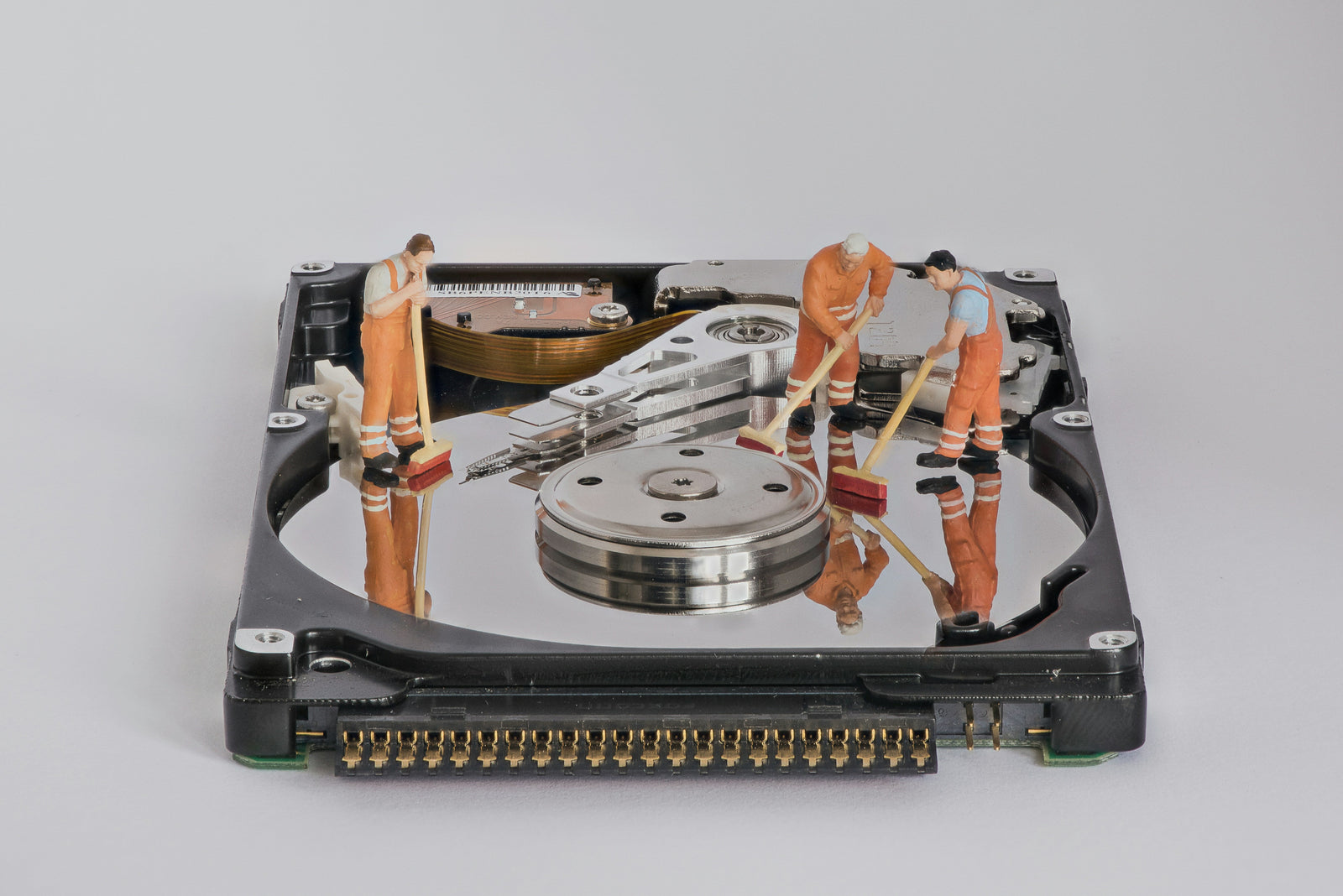Analogue doesn't seem to have a place in such a digital world; however, there seems to be a resurgence of basic pen and paper, and alongside it comes a newfound romance with handwriting. You'd only need to browse through the #bulletjournal and numerous planning hashtags on social media to satisfy your visual cravings of precisely printed prose, and lust over the perfect curvature and consistency of certain letters.

Handwriting is more than just a form of communication. It's part of our identity; you can always tell if something is written by you or someone else. The flourishes, how we cross our Ts and dot our Is, can be telling of our personalities. Our handwriting can change from being super neat and then chicken scrawl when we're in a hurry.

Being part of the Bullet Journal® community, we expose our pages in our online images under public scrutiny, and handwriting is almost certainly what sparks discussion. Everything from what pen or paper was used to produce such elegance, to advice on how to improve handwriting skills. The latter is often the question I get asked and I am by no means an expert on handwriting. I was lucky enough to have a brilliant teacher (my grandmother) who saw the value in neat handwriting. She believed that to achieve neat, legible handwriting, there are three main tips to keep in mind: slow down, aim for consistency in your letter forms, and practice. If you slow down, you become more mindful of putting pen to paper, hence paying closer attention to achieving consistency in letter forms, so that, for example, every letter 'D' is written the same way every time. There is also no substitute for practice, whether it be as formal as handwritten drills or just writing that daily to do list.

If you want to get down to the nitty gritty tips for handwriting, here are a few pointers I've learned along the way:
Consider your work surface:
Writing on a desk will provide you with a more stable platform than, say, on your knee, or sitting on a train, or riding a roller coaster, you get the point Your choice of pen will sometimes, but not always, affect how you write. A fountain pen can yield a different handwriting style altogether if you're used to using a ballpoint. I've also known some super talented masters of handwriting, who produce jaw-dropping handwritten texts regardless of what pen they use. The more flowy the ink, the greater the challenge in controlling those letter forms.
The way your hold your pen can sometimes affect how you write.
My grandmother would often scold me on "choking" the pencil. You know, where you wrap your fingers so tight that they're contorted around the pencil, almost like you're trying to asphyxiate it. A firm, controlled grip on the pencil, a loose wrist, your elbow as an anchor point, and relax your shoulders - this was her handwriting mantra. You'd move your hand across the page with your elbow almost like a pivot point. Moving from the wrist will eventually cause hand fatigue and cramping, so keeping this loose and your shoulders relaxed will ensure a pleasant writing experience.
Take it back to basics.
Start with writing in big bold letters like we used to when we were learning letters in kindergarten. Write using crayons or markers if you want to. Going back to big letter forms can help reshape and retrain your handwriting muscles for writing on a smaller scale. Keep your old writing samples and date them. This is a great way of tracking your progress. Remember it's not about getting it perfect, but rather, progressing and improving. Be kind to yourself, especially when you're first starting out.
Practice Ideas
The beauty of handwriting is that so long as you have a pen and some paper, the avenues for practice are endless. Below are some suggestions for handwriting practice both in your bullet journal and everyday life:
- Quotes: start a collection in your bullet journal of favourite or interesting quotes
- Song lyrics: add another collection in your bullet journal of song lyrics from your playlist
- Pangrams: you might be familiar with "The quick brown fox jumps over the lazy dog." A pangram is basically a sentence that uses up all the letters of the alphabet. This one is my personal favourite: "Pack my box with five dozen liquor jugs"
- Crosswords: see if you can use the tips above to make your morning crossword the neatest it's ever been
- Completing forms: next time you're filling out a form somewhere (e.g. doctors appointment, drivers licence, etc.) instead of hurrying it along, use this as an opportunity to practice your handwriting
- School handwriting workbooks: these are inexpensive and can be bought at some bookstores. If you're in Australia like I am, you can hop onto a particular state's school curriculum and some of them offer free handwriting workbooks online
- Journalling: dedicate one session of your journalling time to slowing down your handwriting when writing down your thoughts
- Every day lists: whether this be your daily pages in your bullet journal, or a random piece of paper with your shopping list on it. It might not be every day, but there's always something lovely about having a legible to do list, and sometimes finding an old shopping list brings me back to certain days in time
- Snail mail: include a small handwritten snippet such as a quote or even your entire letter, where you focus on writing with consistency. A short and sweet thank you note can be a nice starter
- Collections: use any of your bullet journal collections as an opportunity to practice your handwriting
- Participate in a handwriting challenge: there is the Rock Your Handwriting Challenge on Instagram, but you can just as easily create a handwriting challenge for yourself so long as you commit to the practice
- Random practice: find a book or magazine (basically anything that has writing on it), turn to a random page, close your eyes and point to a paragraph. Write it out for practice. You can also go digital with this and use Google's "I'm feeling lucky" button, or write out a passage from a website in your browser history
Analogue has certainly claimed its place in this digital environment, and handwriting has taken centre stage. Why not grab your
bullet journal now and practice your handwriting skills?
 Handwriting is more than just a form of communication. It's part of our identity; you can always tell if something is written by you or someone else. The flourishes, how we cross our Ts and dot our Is, can be telling of our personalities. Our handwriting can change from being super neat and then chicken scrawl when we're in a hurry.
Handwriting is more than just a form of communication. It's part of our identity; you can always tell if something is written by you or someone else. The flourishes, how we cross our Ts and dot our Is, can be telling of our personalities. Our handwriting can change from being super neat and then chicken scrawl when we're in a hurry.  Being part of the Bullet Journal® community, we expose our pages in our online images under public scrutiny, and handwriting is almost certainly what sparks discussion. Everything from what pen or paper was used to produce such elegance, to advice on how to improve handwriting skills. The latter is often the question I get asked and I am by no means an expert on handwriting. I was lucky enough to have a brilliant teacher (my grandmother) who saw the value in neat handwriting. She believed that to achieve neat, legible handwriting, there are three main tips to keep in mind: slow down, aim for consistency in your letter forms, and practice. If you slow down, you become more mindful of putting pen to paper, hence paying closer attention to achieving consistency in letter forms, so that, for example, every letter 'D' is written the same way every time. There is also no substitute for practice, whether it be as formal as handwritten drills or just writing that daily to do list.
Being part of the Bullet Journal® community, we expose our pages in our online images under public scrutiny, and handwriting is almost certainly what sparks discussion. Everything from what pen or paper was used to produce such elegance, to advice on how to improve handwriting skills. The latter is often the question I get asked and I am by no means an expert on handwriting. I was lucky enough to have a brilliant teacher (my grandmother) who saw the value in neat handwriting. She believed that to achieve neat, legible handwriting, there are three main tips to keep in mind: slow down, aim for consistency in your letter forms, and practice. If you slow down, you become more mindful of putting pen to paper, hence paying closer attention to achieving consistency in letter forms, so that, for example, every letter 'D' is written the same way every time. There is also no substitute for practice, whether it be as formal as handwritten drills or just writing that daily to do list.  If you want to get down to the nitty gritty tips for handwriting, here are a few pointers I've learned along the way:
If you want to get down to the nitty gritty tips for handwriting, here are a few pointers I've learned along the way:






Stumbit
April 04, 2024
Practice makes you perfect. Holding a pen with controlled pressure and writing at a minimal comfortable speed will always bring your handwriting so well. Also, practicing right punctuation at the right intervals is very much necessary.